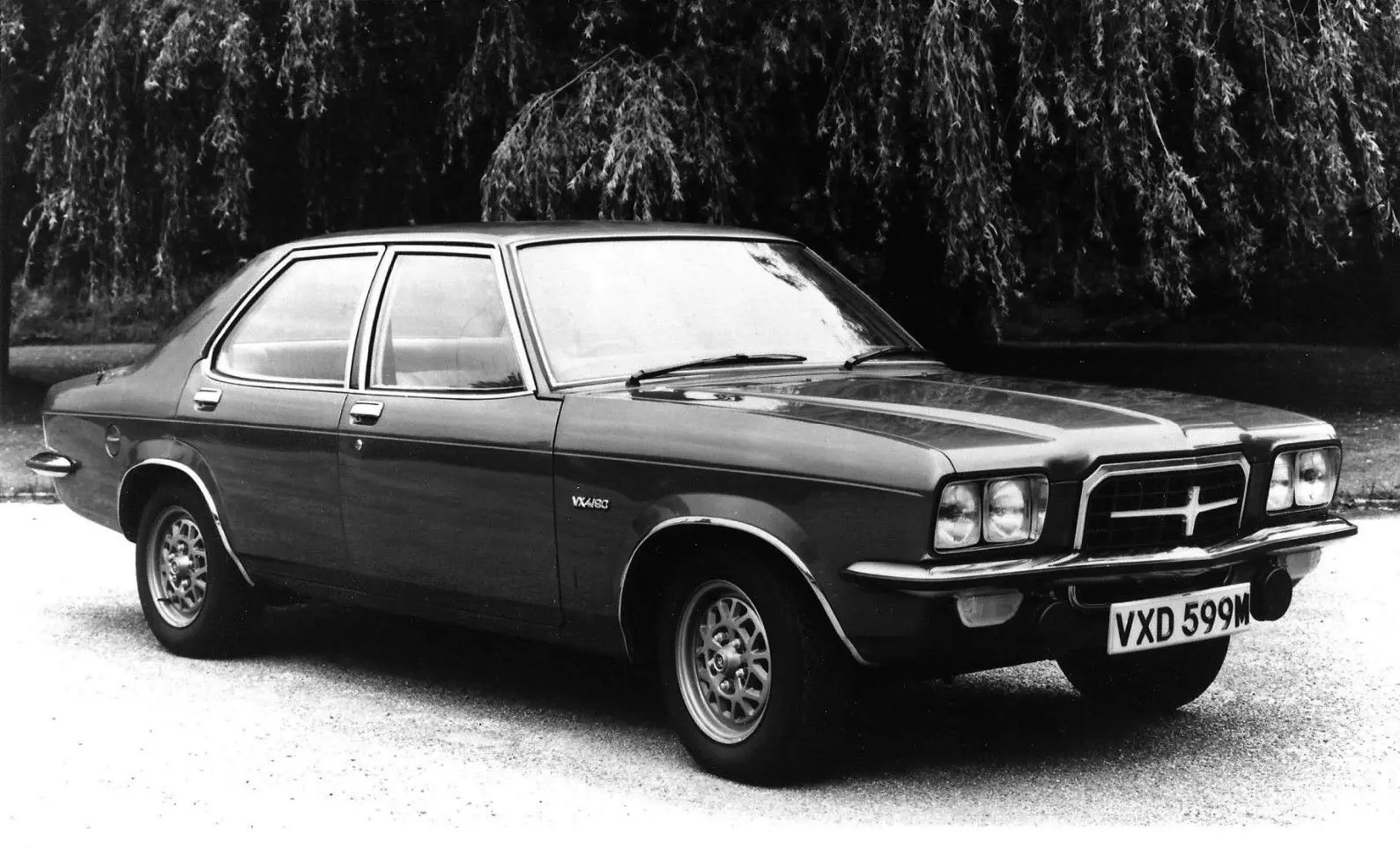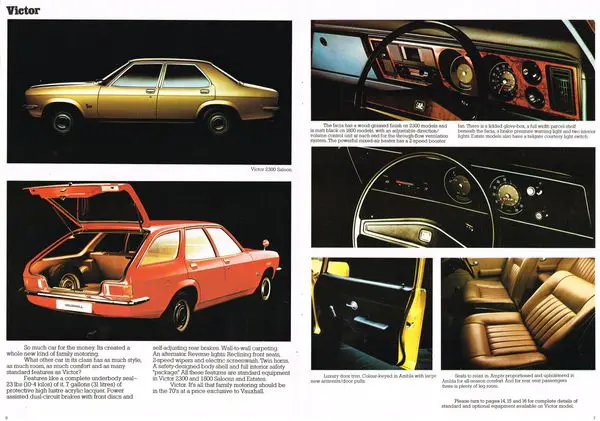THE VAUXHALL VICTOR/VENTORA FE AT 50
15 March 2022
Some cars are best described as “Uber 1970s” – cars such as the FE-Series Victor This was the Vauxhall for the owner who wore Yardley Black Label aftershave– “for the man who sets the pace” – aftershave and whose role model was Peter Wyngarde as Jason King. In fact, the top of the range version starred in another ITC series, The Adventurer, in which the Luton PR Fleet Ventora outacted the star.

The FE replaced the ‘Coke Bottle’ styled FD in early 1972. For the first time, the Victor was not available with a three-speed steering column change, although, for some bizarre reason, the bottom of the range came with a front bench. Indeed, the list of fittings was fairly sparse, with reclining seats, a heated rear window and even radial ply tyres on the extras list. The bodywork had distinct overtones of the 1970 Pontiac Catalina, and the floorpan was shared with the 1971 Opel Rekord D. Your friendly local Vauxhall dealer was unlikely to mention this fact; the two marques had separate outlets,
Power for the new Victor was from 1.8-litre and 2.3-litre ‘Slant Four’ engines, while the VX 4/90 boasted quad headlamps, twin carburettors and a tachometer as befitting the “Hot Transcontinental”. A vinyl roof could identify the flagship Ventora with power from the familiar 3.3-litre straight-six unit. It was also the most expensive Vauxhall, as production of the PC Cresta/Viscount and for £1,763.13 you too could own a car “for people of perception”.
One sales challenge was that in UK terms, the Victor was smaller than the Granada but larger than the Cortina Mk. III: Autocar believed it represented a good compromise between the two Fords. Vauxhall had planned the FE’s dimensions with the demands of their Canadian market in mind. Unfortunately, by the time of its launch, Vauxhall had lost this vital export market due to the unreliability of the Viva/Firenza HC there, which left the firm in a parlous state.

To enhance publicity in the home market, Luton arranged for the BBC TV show Engelbert with the Young Generation to stage a dance routine at their factory. Meanwhile, the press response was mixed. Hot Car thought the VX 4/90 “will suit your 32-year-old Junie Exec with 2.3 children and a dachshund”, and Motor regarded the FE as the best Victor thus far. In their opinion, with changes to the pedal layout and seats, plus a more responsive engine, it could be an excellent car.
However, the May 1972 edition of Motor Sport grumbled, “basically, our opinion is that the cars do not break any new ground and are very much Vauxhalls”. Then, most tellingly, Car thought:
If you check the Victor out against its immediate forbear it reveals itself a vast improvement in practically every department, but against many of its rivals the now-costly Vauxhall has not gained headway, let alone a lead.
Yet, the FE was a handsome machine of genuine presence. The Estate version was especially distinctive, being virtually a five-door fastback; Autocar accurately referred to it as providing “spacious accommodation allied to pleasing good looks”. Perhaps the Victor/Ventora’s main problem was that it was built by a company in a state of chaos and without the resources to fully realise its potential.
Vauxhall could make gradual improvements to the FE. In 1973, Car even praised the VX 4/90’s “tremendous roadholding” and “smooth, accurate steering”. That year also saw two limited-edition models: the Victor ES and the Ventora VIP. The former came with a vinyl top, cloth trim and the decadence of electric windscreen washers. The latter boasted fog lamps, automatic transmission and a radio with a power-operated antenna. Sadly, the sales campaign was one of the worst in the history of television.
For 1974, Vauxhall unveiled the Ventora Estate, which they memorably (and hilariously) described as the car ‘For The Director Who Can’t Decide”. Furthermore, it would carry a beautiful wife, four attractive children and a family’s worth of luggage”. Despite this dire sales copy, Car liked Ventora wagon as “a saloon alternative”, and Motor praised it as “remarkably refined, smooth and comfortable”.
At this time, Luton also marketed the VX 4/90 as a reminder “there is more to life than commuting, shopping and taking the kids to school”; i.e. a Terry Scott lookalike who once owned an MGA in 1959. Motor Sport appeared to have mellowed by 1974, describing it as “a 100 mph, accelerative family saloon which should do well for Britain”. By the end of that year, you could also buy the ‘2300S’, as recommended by James Hunt, and with a radio-cassette and a choice of two ‘Metallic Starfire’ paint finishes as standard. The great driver found it “an ideal car for running my business colleagues around in”.
Production of the VX 4/90 and the Ventora ceased in December 1975, and in the following year, Luton facelifted the FE as the ‘VX 1800/2300’. Car best summarised the virtues of the last Vauxhall to bear the Victor name when they referred to the 2300SL as “honest”, with good road manners and a spacious cabin. Similarly. What Car found it “a sensible sort of car that will do most jobs asked of it”.
The FE was also the last big Vauxhall with styling inspired by Detroit. When the Carlton replaced the VX 1800/2300 in 1978, it was a rebadged Opel Rekord E. Today, there is a thriving owners’ club that helps maintain this very agreeable machine. If the Victor/Ventora did not quite fulfil the brochure’s claim of a vehicle for “people who want to stretch their horizons” they would certainly cut a dash on the weekly visit to Fine Fare.
Especially if you donned a Jason King suit for the occasion.
